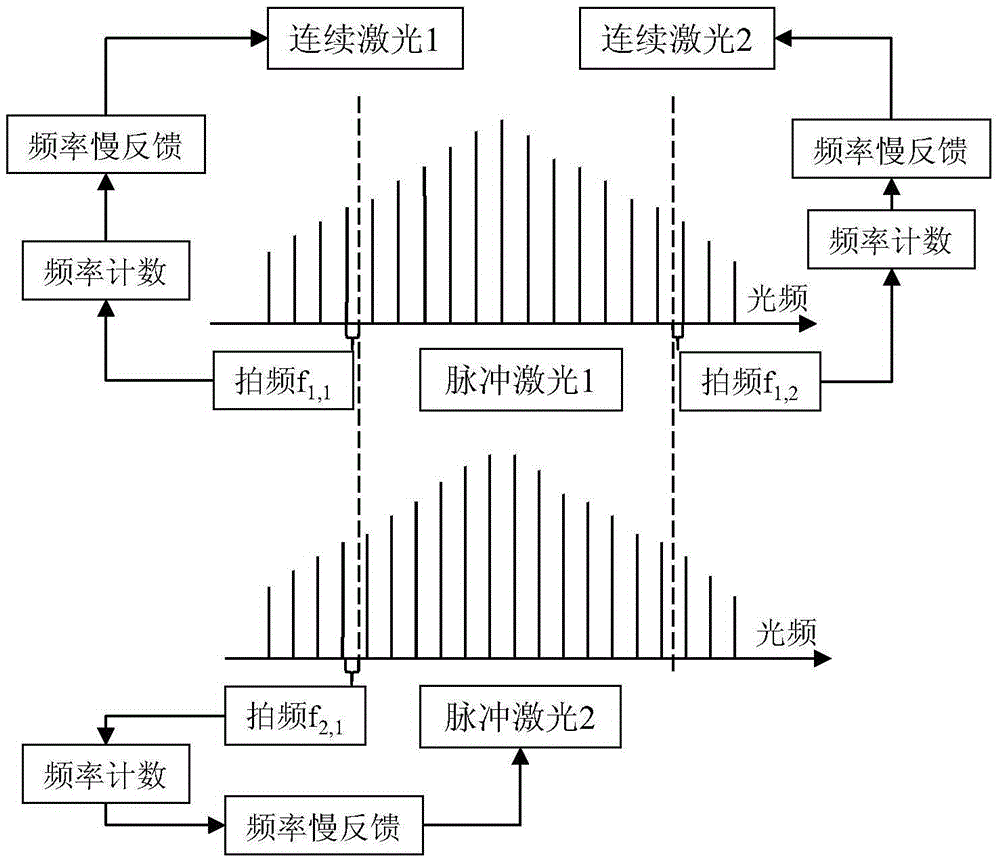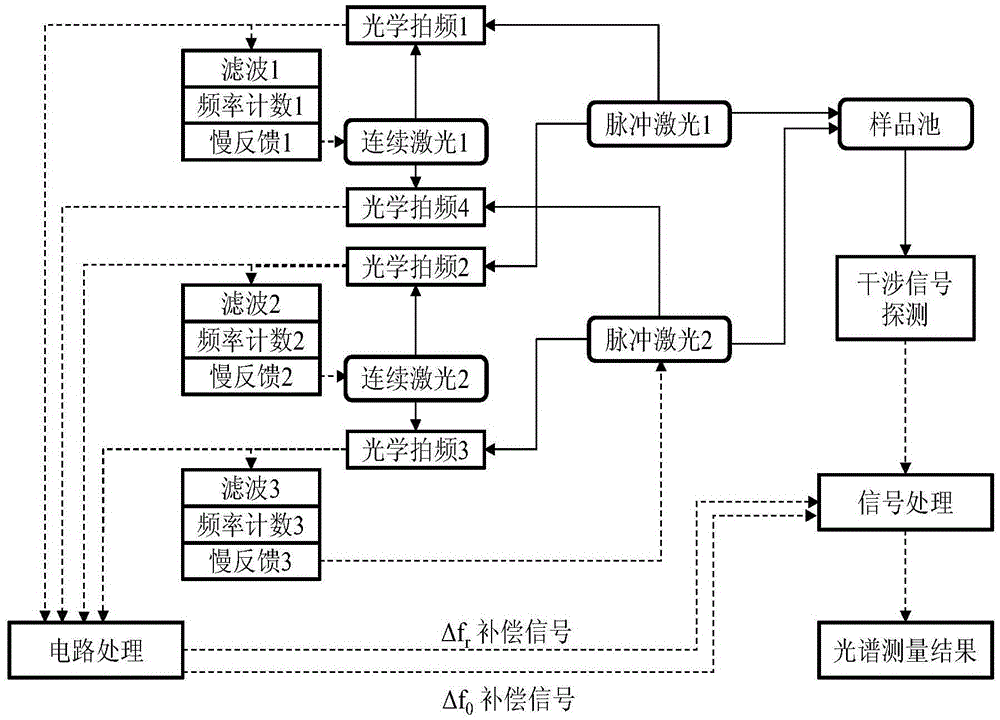Self-adaptive double-light-comb spectrum system
A spectral system and dual optical comb technology, applied in the field of photoelectric detection, can solve the problems of compensation signal loss, limited photoelectric noise, beat frequency signal loss, etc., to achieve reduced bandwidth and complexity, flexible selection methods, and high measurement accuracy Effect
- Summary
- Abstract
- Description
- Claims
- Application Information
AI Technical Summary
Problems solved by technology
Method used
Image
Examples
Embodiment Construction
[0017] Such as figure 1 The schematic diagram of the self-adaptive dual-comb spectroscopy system is shown, including pulsed laser 1, pulsed laser 2, continuous laser 1, continuous laser 2, and three beat frequency detection modules, three frequency counting modules and three frequency slow feedback modules.
[0018] The beat frequency signals of pulsed laser 1 and continuous laser 1 detected by the first beat frequency detection module are f 1.1 , through the first frequency counting module, measure the specific value of the beat frequency signal, and then set the upper limit and lower limit of the drift value of the frequency according to the bandwidth of the selected filter, when the free drift range of the beat frequency signal exceeds the set When the frequency upper limit or lower limit is set, the first frequency slow feedback module starts to work. By controlling the pumping current, operating temperature, and output optical frequency of the continuous laser 1, the beat...
PUM
 Login to View More
Login to View More Abstract
Description
Claims
Application Information
 Login to View More
Login to View More - R&D
- Intellectual Property
- Life Sciences
- Materials
- Tech Scout
- Unparalleled Data Quality
- Higher Quality Content
- 60% Fewer Hallucinations
Browse by: Latest US Patents, China's latest patents, Technical Efficacy Thesaurus, Application Domain, Technology Topic, Popular Technical Reports.
© 2025 PatSnap. All rights reserved.Legal|Privacy policy|Modern Slavery Act Transparency Statement|Sitemap|About US| Contact US: help@patsnap.com



